LCI participates in 2014 International Conference on Climate Change
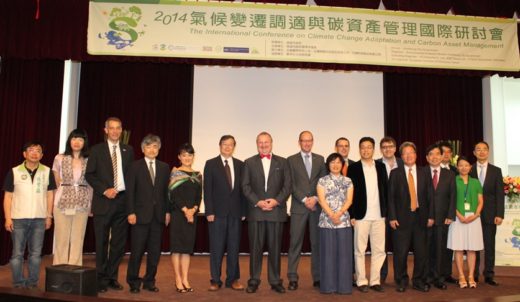
On 12 June, per Kaohsiung City Government's invitation, the ECCT LCI as the co-organizer, participated 2014 International Conference on Climate Change Adaptation and Carbon Assets Management. The conference took place at Chateau de Chine Hotel Kaohsiung, attracting over 200 audience from five local city governments including Kaoshiung, Tainan, Pingtung, Chayi City and County, as well as local industries such as China Steel and CPC Corp.
After the conference, the ECCT speakers were invited to join the dinner cruise along the coast of Kaohsiung Harbor, and further on 13 June joined the site tour to China Steel Plants and Headquarters.
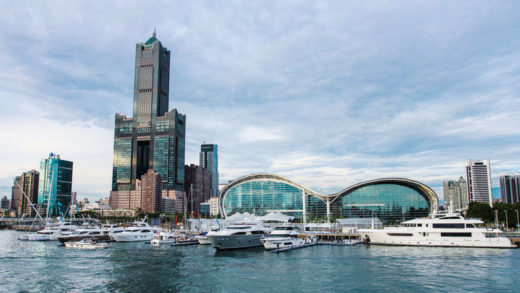
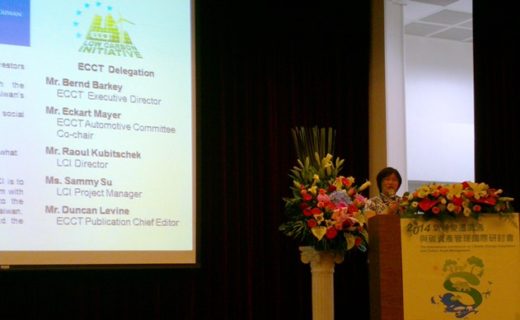
Opening remarks were made by Kaohsiung City Government (KCG) Deputy Mayor Liu Shyh-fang. In her remarks, she said the conference followed a trip by the KCG to Copenhagen, where city officials exchanged a lot of information about climate change adaptation and carbon asset management in northern Europe. She said that the city has undergone substantial transformation in recent years to become greener. This has involved substantial efforts to mitigate water, air and soil pollution and thereby clean up the city. The city has also been actively promoting renewable energy, such as photovoltaics. Kaohsiung used to be a significant polluter but in recent years, there has been a concerted effort on the part of authorities and industry to balance industrial development with environmental protection. While Copenhagen has a different climate from Kaohsiung, both cities share the same aim: to preserve and protect the environment.
Keynote speeches
Dr Huang Chung-huang, Deputy Director of the Taiwan Research Institute introduced the keynote speakers and coordinated the panel discussion following their presentations.
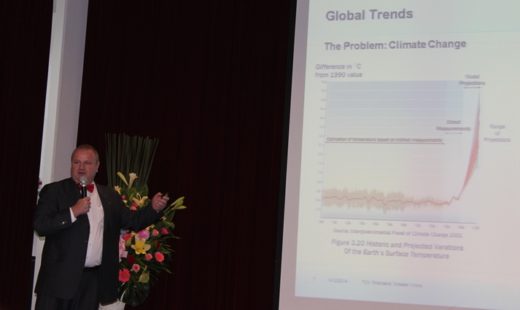
The global population continues to grow while rising living standards have increased the demand for comfort and the rate human beings are consuming resources has already reached unsustainable levels. We are using more resources than any other generation in the past and we will be the generation that will use the most resources.We are now seeing rising prices for resources, environmental pollution and food shortages and these problems will only get worse. Rich nations can afford to deal with these problems but the poor cannot. We are using up fossil fuels, which took millions of years to create, at a faster rate than ever before. Food prices are going up and there is a lack of food in poor countries. While the use of clean, renewable energy is rising, its share of the overall energy-generating capacity is still very low. Germany is the global leader in terms of solar power, despite not being a sunny country, while China is the world's wind energy leader. Climate change is real and we will have to intensify the use of renewables or else face greater climate change.
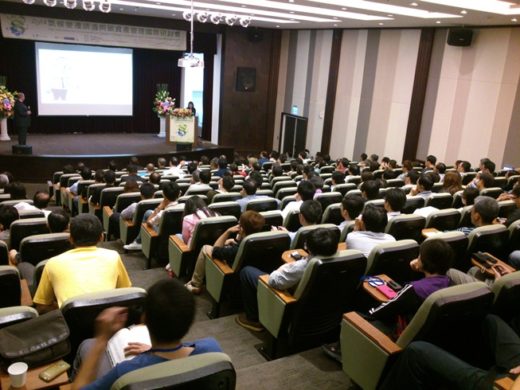
However, getting people to change is difficult because we have become too comfortable and complacent. We need to set frameworks for a sustainable world. We have only recently begun to talk about and focus on sustainability, which, from a human perspective, is defined as meeting the needs of the present generation without compromising the ability of future generations to meet their own needs and improve the quality of life while living within the carrying capacity of the earth's supporting eco-systems.
There are four basic actions that we need to take to become sustainable: reduce dependency on fossil fuels, reduce our dependence on synthetic chemicals and heavy metals, reduce the destruction of nature and ensure the access of basic needs for all humans globally (clean air, water and food).
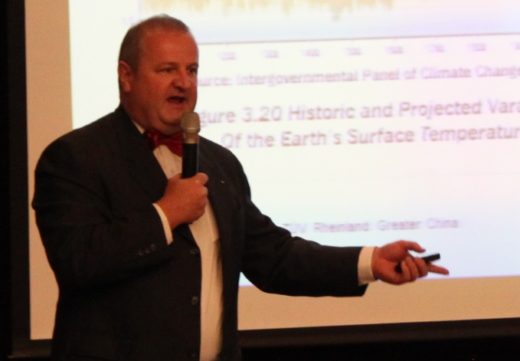
We need to have global legislation and Europe is doing this by setting carbon reduction goals, setting legislation for energy efficiency, stepping up the installation of renewable energy systems and banning other emissions besides CO2 (eg hydroflourocarbons, nitrogen oxides and black carbon).
The EU's carbon tax on planes was controversial but necessary. The US has also finally taken action on climate change by setting various goals for air quality, chemicals, protecting waters among others.
China is also investing RMB 5 billion over 10 years to promote green energy. Taiwan has not done much and this is a missed opportunity given the perfect location for several kinds of renewable energy including solar, wind, and geothermal energy.
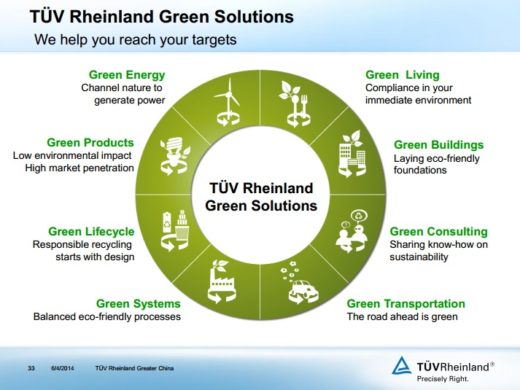
Given the scarcity of clean water in many parts of the world, measuring the water footprint is a new and growing trend. Measuring the water footprint includes resources manufacturing, transport usage and recycling. It is not so complicated and can be done for all types of products including food and textiles. Textiles, for example, have to measure the use of water, dye and recycled materials. The water footprint of one 500 ml bottle of a soft drink in The Netherlands is 35 litres if you take into account the manufacturing process (0.41 litres), packaging (7 litres), ingredients (28 litres) and processing the actual water used in the drink. A hamburger has a water footprint of 2,400 litres (mostly related to the water needed to produce beef) while a pair leather shoes has a water footprint of 16,600 litres. There is still much work to do in measuring the footprint of other products.
Aware of the enormous environmental impact of their processes and products, many companies are working to reduce their footprints through recycling and energy and water saving measures. The ISO 50001 energy management system teaches companies how to save on energy costs. Kretzschmar cited several examples of companies that have taken action. Changhua Christian hospital in Central Taiwan set up an energy management system. In Germany, Mercedes Benz introduced energy saving. Meanwhile some European fashion labels are demanding a 30% cut in GHG emissions by their suppliers by 2015.
TÜV's own green product mark measures carbon footprints, recyclability and chemical use to help its customers reach their targets. The trend towards greater green accounting and measurement is becoming more widespread and sophisticated. A number of green standards are being developed and implemented related to eco-design, eco-efficiency, material flow cost accounting, event sustainability and business continuity management systems.
Keynote 2
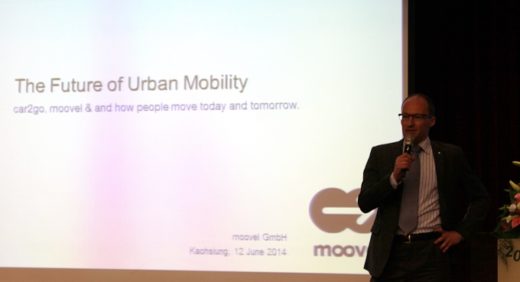
Speaker: Rainer Becker, Head of Business Development Asia-Pacific, moovel GmbHGrowing urbanization has resulted in more people in the same area and consequently more congestion, more pollution and less parking. Today's world needs new mobility concepts. moovel's mobility solution, which has been successfully implemented in cities in Europe and the United States has a lot of potential in Asia, especially given the number of crowded cities.Today, more space in cities is used for parking than for schools, meaning that far too much space is used for storing dead metal than for educating our kids. There are number of trends that make moovel's business model possible. For the modern generation, access trumps ownership, meaning that people care less about ownership than having easy access to goods and services when they need them. People used to want to own things like cars but now we have moved from conspicuous consumption to collaborative consumption. Another important trend is "always on connectivity". Smart phones are changing our lives and behavior. Today, one billion smartphones are in use and by 2017, this will have risen to 3.2 billion. Smart phones give us transferency, meaning they give us all the necessary information to allow us to use a variety of transport options. For example, if a person has time and wants to save money, the best option is to use public transport. However, if she has a lot of goods to carry or it is raining, she would probably prefer to have a car. In other cases, if someone has been out for a night on the town, he should not drive and would therefore need a taxi. What these trends indicate is that people don't just want one means of transport. They want to have multiple options. This does not imply that we don't need public transport. We still need public transport but we need to recognize that public transport is never door to door and it is sometimes not the best option.
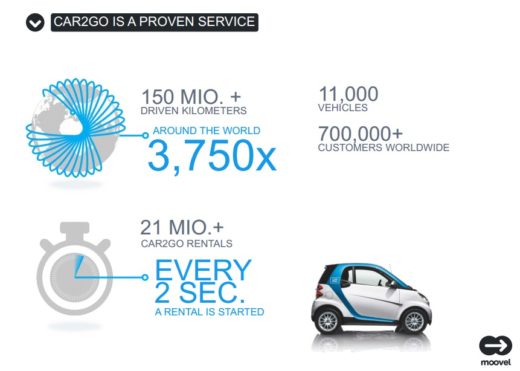
Car2go solves part of mobility challenge. Each car2go can replace up to 15 vehicles. This will save space currently wasted by parking so many cars as well as significantly reduce pollution. The system is simple, can be used any time and any place. Buying a car to use once a day is very inefficient.Car2go meets people's demand for affordability and is convenient at the same time. Existing car sharing models with stations at specific time and place are too inflexible. Car2go is much more flexible. Cars can be parked anywhere where legal parking is possible (moovel made arrangements with participating cities for paying for parking). Using the moovel APP, users can see where available cars are at any time and can get access to cars at any time. Pricing is by the minute of driving time. There are no monthly fees or hidden charges. Besides convenience, this also has an environmental benefit because it encourages users to really think carefully about whether or not they really need a car at any given time.
To become a car2go user, customers need to register and download the APP. The APP tells users where to locate an available car. Any car can be used. Currently, users need a membership card but in future they will be able to swipe their smartphones to get into the car. The car will open within four seconds. Users then sign in with a pin and the car can then be driven to and parked in any legal parking spot. All the costs (petrol, parking and insurance) are included. moovel tends to use small cars (such as Smart Cars) because they are easy to park and require small parking spaces. After parking, the user logs out, returns the key and uses the card to lock the car. Currently car2go is offered in 25 locations in Europe and the United States with a total fleet of 11,000 vehicles and used by 700,000 customers. Each car is used an average of six to eight times a day. A car2go is rented every two seconds somewhere in the world.
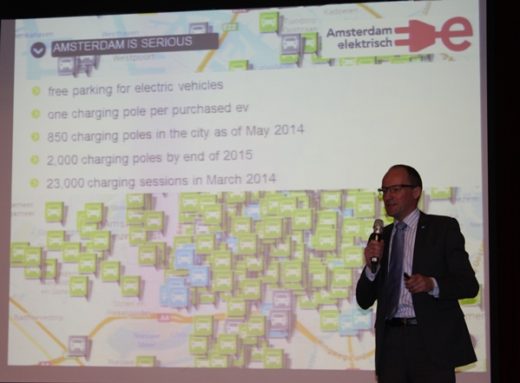
car2go's fleets in three cities - Amsterdam, Stuttgart and San Diego - are electric. 300 smart fortwo are used in Amsterdam, 350 in San Diego and 500 in Stuttgart. Altogether around 1,250 electric vehicles in operation are electric. Electric vehicles are a good solution but there are a number of difficulties that have to be addressed. Moovel has learnt a lot about EVs from its experience. It is vital to have a comprehensive charging infrastructure in place. There must be hundreds of charging stations in place for the system to be convenient. This requires commitment on the part of city governments. The city of Amsterdam is a good example of a city that invested in infrastructure. It took the city only six months to plan and reach an agreement on how to roll out its system. Various authorities in Amsterdam also worked together to make the system successful. This is a problem in other cities where different authorities are responsible for traffic safety and for environmental issues, often with conflicting interests.
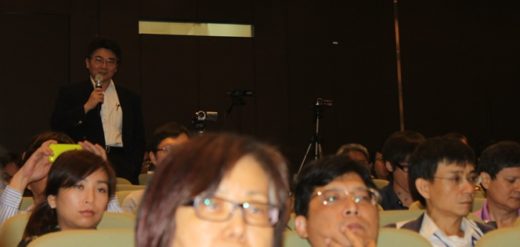
Amsterdam allows free parking for electric vehicles and ensures a new charging pole for every EV purchased. As of May 2014, the city had 850 charging poles in the city and plans to install a further 2,000 charging poles by the end of 2015. The city also encourages offers incentives to people who buy EVs by installing charging stations right outside their houses. This is not easy and is expensive. Other problems include the fact that EV technology is relatively new and standardization is not yet universal for charging stations. Another issue is convenience. Charging stations and cables are outside and affected by the elements. Plugging in cars can therefore be a dirty business. The current charging stations take six to eight hours to recharge cars completely and 4-5 hours to recharge to 80%. In future there needs to be a quick-charging standard and infrastructure in place to make it as convenient as traditional cars. Moreover, the business case for EVs is still expensive. EV cars are still more expensive than traditional cars to produce and insurance costs are higher. Economies of scale will make EVs cheaper but we are still in the initial phase.
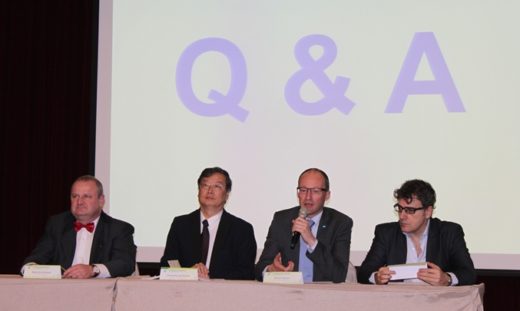
The car2go business itself has been a work in progress. Many approaches have been tried to improve the system. Car2go users tend to be responsible and feel like they are part of a kind of community. Members are customers and tend to help to keep cars clean and safe. For petrol cars, users get an additional 20 free minutes if they fill up with petrol. When users log in they rate the level of cleanliness, which reflects on the record of the previous user. Nevertheless, the cars inevitably become dirty and people have to be employed to clean and maintain them.Becker concluded that for a car sharing system to succeed, resistance from traditional car owners will have to be overcome and all stakeholders will need to work together to create the right conditions for sustainable success.
Keynote 3
The third keynote speech was on the topic of carbon asset management strategy for the energy sectors and delivered by Massimiliano Varrucciu, General Manager of EDF Trading China.
Afternoon panel sessions
The afternoon session consisted of two panels. The first (Panel A) focused on adapting to climate change and the second on carbon asset management approaches. LCI member, Grundfos participated in Panel A.
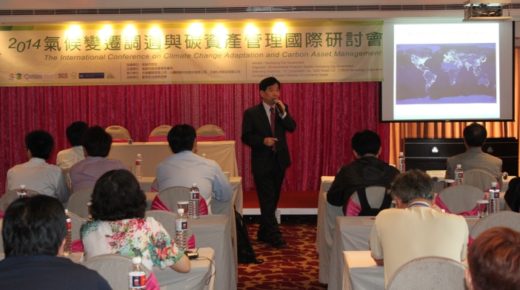
Topic: Meeting water and energy challenges now
Speaker: Dr S John Pien, General Manager, Grundfos Handels AG Taiwan Branch
John Pien spoke about the growing challenges of providing sufficient and safe water as well as reducing energy consumption. One of the most drastic effects of climate change is in relation to the world's water supplies. Demand for water is rising due to rising populations and standards of living. In many regions, the availability of fresh water is becoming scarcer while demand continues to grow.
Water and energy are connected because of increasing water stress and flood risk and increasing water related energy use, which is exacerbated by climate change. Breaking the vicious cycle requires a more sustainable consumption pattern using the correct tools of energy efficiency, better resource management and water conservation.
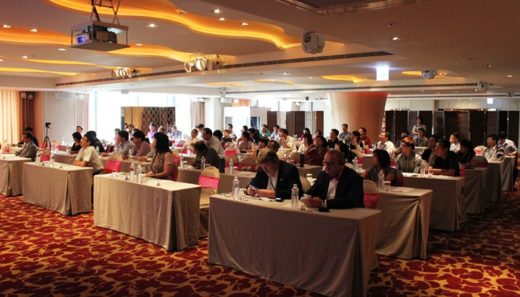
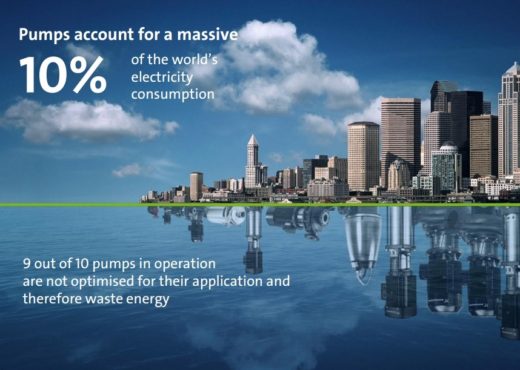
Grundfos is largest pump manufacturer in the world. The company's pump solutions provide for the needs of 800 million people in the world. For example, in Romania, using the company's products helped the city to reduce losses by 20% and cut energy costs. At a manufacturing plant owned by Renault and Nissan, rainwater collected by 50 of Grundfos's large pumps enabled the plant to use rainwater for 67% of its production needs and cut waste water discharge to zero. The company also helped a hospital, which had a serious problem with legionella disease in its water. Grundfos provided 60 disinfection systems which resulted in a properly disinfected supply of water while at the same time saving energy. The company also supplied water to a low-income community in Kenya for 100,000 people.
Switching to energy-efficient pumps provides immediate environmental benefits and the higher costs can be recouped relatively quickly, depending on the industry. One hotel group saved up to 80% of their energy costs and recovered their costs within four years. At a German brewery, which replaced their pumps, costs were recovered in just five months.
Grundfos also practices what it preaches. The company has pledged to never emit more CO2 than it did in 2008 level, regardless of how much the company grows. The company has also reduced its water usage by 45% since 2008, despite having expanded business by 41% over the same period. Pien concluded that a needs-driven approach is needed that takes into account water quantity, quality provided at the right time and the right place.
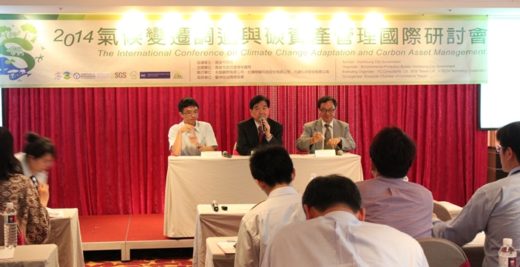
In the Q&A session that followed his presentation, Pien explained that, as a Danish company, in line with the standards and consumer expectations in Denmark, Grundfos is devoted to reducing carbon emissions and saving energy while working to improve the quality of living. The EU already has strict standards for energy efficiency and invited Grundfos to consult on how to improve energy saving levels. This demonstrates the recognition of the company's high standards and market leadership in terms of energy saving and quality.
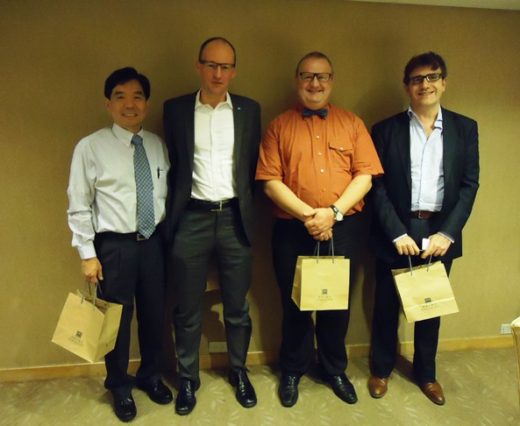
In addition to Pien's presentation, other presentations in Panel A were delivered by Dr Hsu Yu-du from the Industrial Technology Research Institute on the topic "Impact of climate change to energy supply and risk management". In Panel B, presentation were given by Takashi Hongo, Senior Fellow, Mitsui Global Strategic Studies Institute on the topic "Carbon risk management and carbon business strategy"; Lee Chien-ming from National Taipei University on the subject "Business opportunities in the low carbon era and by Zhuli Hess, China Director of VCS Association on the subject "How offset works in the context of emissions trading".
Introductory speeches
Topic: The vision and adaptation plan for climate change for local governments in Taiwan
Speaker: Dr Hsu Hsu-cheng, Senior specialist, National Development Council
After the deputy mayor's introductory remarks, Dr Hsu Hsu-cheng, Senior specialist for the National Development Council gave an overview of how central and local governments are working together to deal with climate change. He noted that people are aware of the ever-increasing frequency of extreme weather events caused by climate change. For example, the wet season in May and June in Taiwan used to be limited but, based on historical records, the intensity and volume of rainfall has increased. The total number of rainy days has actually decreased but the intensity of heavy rain has increased.
There are two ways to deal with climate change: mitigation and adaptation. Some major carbon emitters have been working to reduce emissions but Taiwan's efforts to reduce emissions have had a limited impact to date. Taiwan's rate of warming is similar to the global rate at around 2 degrees. The government began prioritizing certain projects four years ago. Previously, there was only talk about carbon reduction but now there is also a focus on adaptation. Taiwan's central and local governments have started awareness campaigns, inter-agency cooperation and introduced five-year plans to address climate change. These include pilot projects and programmes to raise awareness in schools and universities. The government has also set up a website to act as an information portal on climate change adaptation with links to other sites. The central principle is to reduce vulnerability and increase resilience. There needs to be a balance between adaptation and mitigation. Different regions of Taiwan respond in different ways, depending on particular issues of vulnerability in their areas and draw up plans first for priority areas. They do this based on accumulated experience of local climate-related events. For example, elderly people may be unable to escape from flood hit areas and plans need to be put in place to address this problem.
The ultimate goal is to make local governments more aware of adaptation. The central government also helps local governments to set up task forces and local teams. Adaptation is also related to land zoning and land use. Authorities also offer guidelines for planning. Many local governments have already taken action. The NDC has assisted by hosting various workshops and other activities.
Dr Hsu concluded that there is a need to raise awareness that climate change in irreversible and plan for disaster and recovery as soon as possible. We need to respond to climate change in a vigorous way just as Europe has and turn the climate change threat into an opportunity. In addition, we need more research on how to cope and we need both mitigation and adaptation.
Topic: Low carbon policy and vision for Taiwan
Speaker: Dr Chien Hui-chen, Executive Director, Greenhouse Gas (GHG) Reduction Management Office, Environmental Protection Administration (EPA)
Taiwan is drawing on knowledge and experience from other countries in drawing up its carbon reduction guidelines and related policies. Policies cover all kinds of carbon reduction methods including the efficiency of power plants, energy efficiency in industry and consumer sectors, renewable energy, biofuels, nuclear energy and Carbon Capture and Storage (CCS). The government has set short, medium and long term carbon reduction goals. The short and medium term goal is to reduce carbon emissions to the 2005 level by 2020 and to the 2000 level by 2025. The long term goal is to reduce emissions to 50% of the 2000 level by 2050. There are a number of ongoing initiatives to achieve the goal of a low carbon society.
Chien said that Taiwan needs mandatory legislation to reach the goals. For example, it has drafted an air pollution control act that will focus on eight different areas. Mandatory emission reporting will be required under new act. We are now in the pilot phase and voluntary reporting already began last year. Mitigation efforts cannot be done by just one agency so the Executive Yuan has set up an energy conservation and GHG reduction team with a committee in each ministry, responsible for setting up plans to reduce emissions. The EPA is examining the potential for carbon capture storage (CCS). As part of ongoing government restructuring, the EPA will be upgraded to a ministry in the future. Chien said that Taiwan is willing to work with international organisations and has sent its emission reduction targets to the United Nations Framework Convention on Climate Change (UNFCCC). She concluded by stressing the need for global cooperation to address climate change saying that "we all sink or swim together" and therefore Taiwan should be part of the solution.
